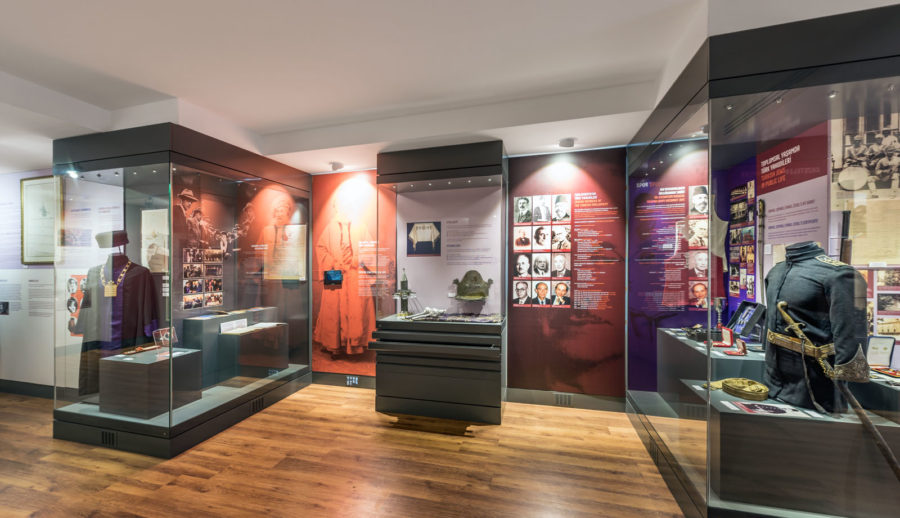
The Quincentennial Foundation Museum of Turkish Jews (500. Yıl Vakfı Türk Musevileri Müzesi) is one of our grantees from the Culture & Arts Fund 2021. The Foundation is implementing the Online Museum project to develop a 3D version of the Museum of Turkish Jews which can be visited online.
Read below the interview:
The Quincentennial Foundation is receiving a grant from our Foundation for the first time in the 2021 term of the Culture and Arts Fund. Can you tell us about your work so that our readers can get to know you better?
The Quincentennial Foundation was established in 1989 to celebrate in Turkey the 500th anniversary of the arrival of the Sephardic Jews, who were expelled from Spain in 1492, in the Ottoman Empire and the creation of a new homeland there. The Museum of Turkish Jews was opened in 2001 at the Zulfaris Synagogue in Karakoy, Istanbul. In 2016, it was moved to Buyuk Hendek Sokak, which is connected to the Neve Shalom Synagogue in Galata.
In addition to its permanent exhibitions, our museum also hosts various temporary exhibitions. We organise activities such as oral history projects, concerts, the European Day of Jewish Culture, training for tourist guides, and workshops for children.
The 2600-year-old historical and cultural heritage of Turkish Jews in this land and their contribution to social and political life are displayed chronologically in the museum.
The Museum is the only place to visit and learn about Jewish culture in Turkey. What information can visitors find about Jewish history and culture in Turkey? Can you tell us about the museum’s collection?
The 2600-year-old historical and cultural heritage of Turkish Jews in this land and their contribution to social and political life are displayed chronologically in the museum. In addition, our museum consists of sections where history, ethnography, traditions, and settlements are explained, and the Midrash where religious objects are exhibited. The Midrash Hall, which establishes the physical connection between the Museum and Neve Shalom Synagogue, allows the religious ceremonies in the Synagogue to be watched live.
Our museum contains many different items related to intangible cultural heritage such as language, music, and food. Visitors can listen to the music on the touch screens in the museum, watch the preparation of various dishes of Sephardic cuisine, or learn about the Jewish settlements spread throughout Anatolian geography.
We exhibit antiquities in the museum; one of them is the 5th-century oil pot with the Star of David on it and other archaeological artefacts from the excavation sites found during the Izmir-Basmane excavation. When we exhibit these pieces, we show how old the Jewish existence in Anatolia is. We want to emphasise this and change the 500-year-old guest perception. The other one is the book Midrash Teilim, published in 1512. The establishment of the first printing house by the Jews who came to the Ottoman lands from Spain is crucial in terms of press history. We try to collect clothes, report cards, medals, certificates, photographs, religious ritual objects, newspapers, and in short, everything related to Turkish Jewish culture in the museum.
The Online Museum project offers the opportunity for our museum to be visible and accessible in this age where borders have disappeared, and research is done mainly online.
Can you tell us about the purpose and scope of the events and trainings you organise? What should those who want to participate in your activities do?
The main purpose of the events is to explain and introduce our culture to large audiences. At the same time, to ensure that the public recognises this culture, which belongs to this geography. Those who want to participate in our activities can sign up for the newsletter on our website. We also announce our activities on our social media accounts.
The COVID-19 pandemic has transferred of our relationship with art from the physical to the virtual. During the pandemic, many national and international museums were opened to virtual visits. How do you think this will affect museum culture in the long run?
Museums like to be busy with visitors. We learned a lot during the pandemic. We held online workshops, movie premieres, presentations, and lectures to keep the interest of the visitors alive, and we saw that people from many different countries attended our events. This revealed the need for a virtual tour of the museum. In the long run, museums will remain as centres of attraction. Seeing the original object, breathing the air of the museum… Museums will continue to be essential for culture and arts.
With our grant support, you will implement the Online Museum project. Can you tell us about the purpose and activities of this project?
Digital platforms are becoming an indispensable part of our lives day by day. The Online Museum project offers the opportunity for our museum to be visible and accessible in this age where borders have disappeared, and research is done mainly online. At the same time, it creates an opportunity to reach specific information with a single click. With the project, visitors will reach a platform where they can get information about the place and its content, and even communicate if possible, without going to the venue.
About the Quincentennial Foundation
The Quincentennial Foundation provides information to visitors about the history, culture, and traditions of the Jewish community existing in Turkey for 2600 years, focusing on their contribution to society. Alongside the permanent exhibition, the Museum hosts temporary exhibitions, conferences, seminars, concerts, and various events.



